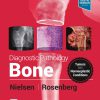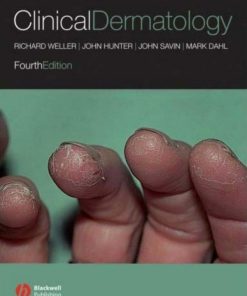Small Groups Key Readings 1st Edition by John Levine, Richard Moreland 0863775942 9780863775949
$50.00 Original price was: $50.00.$25.00Current price is: $25.00.
Authors:John M. Levine; Richard L. Moreland (edt) , Tags:Behavioral Sciences , Author sort:Levine, John M. & Moreland, Richard L. , Published:Published:Feb 2008 , Comments:Comments:Behavioral Sciences
Small Groups Key Readings 1st Edition by John Levine, Richard Moreland- Ebook PDF Instant Download/Delivery. 0863775942, 9780863775949
Full download Small Groups Key Readings 1st Edition after payment

Product details:
ISBN 10: 0863775942
ISBN 13: 9780863775949
Author: John M. Levine; Richard L. Moreland
Research on small groups is highly diverse because investigators who study such groups vary in their disciplinary identifications, theoretical interests, and methodological preferences. The goal of this volume is to capture that diversity, and thereby convey the breadth and excitement of small group research by acquainting students with work on five fundamental aspects of groups. The volume also includes an introductory chapter by the editors which provides an overview of the history of and current state-of-the-art in the field. Together with introductions to each section, discussion questions and suggestions for further reading, make the volume ideal reading for senior undergraduate and graduate students interested in group dynamics.
Small Groups Key Readings 1st Table of contents:
Part 1: Group Composition
Group Composition As a Consequence
Group Composition As a Context
Group Composition As a Cause
References
Readings
Discussion Questions
Suggested Readings
Reading 1: The Contribution of Influence and Selection to Adolescent Peer Group Homogeneity: The Case of Adolescent Cigarette Smoking
Method
Results
Discussion
References
Reading 2: Some Effects of Proportions On Group Life: Skewed Sex Ratios and Responses to Token Women
The Field Study
Theoretical Framework
Performance Pressures
Boundary Heightening
Role Entrapment
Implications
References
Reading 3: Effects of Crew Composition On Crew Performance: Does the Whole Equal the Sum of Its Parts?
Present Experiment
Method
Results
Discussion
References
Part 2: Group Structure
References
Readings
Discussion Questions
Suggested Readings
Reading 4: Status, Expectations, and Behavior: A Meta-Analytic Review and Test of the Theory
Evidence for the Theory
Alternative Perspectives
Effects of the Strength of the Status Differentials
Procedure
Results
Discussion
Notes
References
Reading 5: Asymmetries In Attachments to Groups and to Their Members: Distinguishing Between Common-Identity and Common-Bond Groups
Study 1
Study 2
General Discussion
Notes
References
Reading 6: The “Friendly” Poker Game: A Study of an Ephemeral Role
Procedure
The Players
The Setting and Structure of the Game
Becoming a Member: Selection and Role Socialization
Benefits of Membership: Satisfactions from the Ephemeral Role
Conclusions: The Ephemeral Role
References
Part 3: Conflict In Groups
References
Readings
Discussion Questions
Suggested Readings
Reading 7: Effects of Group Identity On Resource Use In a Simulated Commons Dilemma
Subordinate and Superordinate Group Identity
Overview of Method
Experiment 1
Experiment 2
Experiment 3
General Discussion
References
Reading 8: Status, Ideology, and Integrative Complexity On the U.S. Supreme Court: Rethinking the Politics of Political Decision Making
Theoretical Considerations
Study Overview
Method Overview
Experiment 1
Experiment 2
Experiment 3
General Discussion
References
Reading 9: Being Better By Being Right: Subjective Group Dynamics and Derogation of ingroup Deviants When Generic Norms Are Undermined
Overview and Hypotheses
Experiment 1
Experiment 2
Experiment 3
General Discussion
References
Reading 10: Does Power Corrupt?
Method
Results
Discussion
References
Part 4: Group Performance
Part 4 A: Decision Making
References
Readings
Discussion Questions
Suggested Readings
Reading 11: Collective Induction
Method
Results
Discussion
References
Reading 12: Social Transition Schemes: Charting the Group’s Road to Agreement
Conceptual Distinctions
Path Independence and Stationarity
Time Limits, Group Experience, and Sex of Members
Summary
Method
Results
Discussion
References
Reading 13: Pooling of Unshared Information In Group Decision Making: Biased Information Sampling During Discussion
Pregroup Information Distributions
Biased Sampling Model of Group Discussion
Method
Results
Discussion
References
Reading 14: Threat, Cohesion, and Group Effectiveness: Testing a Social Identity Maintenance Perspective On Groupthink
Case Studies of Groupthink
Experimental Research On Groupthink
Toward the Reconciliation of Conflicting Results
Predictions
Experiment 1
Experiment 2
Experiment 3
General Discussion
References
Reading 15: The Effects of Repeated Expressions On Attitude Polarization During Group Discussions
Study 1
Study 2
General Discussion
References
Part 4 B: Productivity
References
Readings
Discussion Questions
Suggested Readings
Reading 16: Many Hands Make Light the Work: The Causes and Consequences of Social Loafing
Experiment 1
Experiment 2
General Discussion
Reference Note
References
Reading 17: Impact of Group Goals, Task Component Complexity, Effort, and Planning On Group Performance
A Model of Group Goals, Task Complexity, and Group Performance
Method
Results
Discussion
References
Appendix
Reading 18: Transactive Memory: Learning Who Knows What In Work Groups and Organizations
Improving the Performance of Work Groups By Managing Their Composition
Transactive Memory and Work Group Performance
Transactive Memory Through Group Training
Alternate Routes to Transactive Memory
Transactive Memory Systems In Organizations
References
Part 4 C: Leadership
Leaders
Leader–Follower Relationships
Followers
References
Readings
Discussion Questions
Suggested Readings
Reading 19: Self-Monitoring and Trait-Based Variance In Leadership: An Investigation of Leader Flexibility Across Multiple Group Situations
Evidence for Trait-Based Approaches to Leadership
Leader Dispositions and Response Flexibility
Method
Measures
Results
Discussion
References
Reading 20: The Contingency Model: A Theory of Leadership Effectiveness
Development of the Model
A Contingency Model for Predicting Leadership Performance
Empirical Tests: Extension of the Model
Experimental Test of the Contingency Model
Discussion
References
Reading 21: Self-Categorization and Leadership: Effects of Group Prototypicality and Leader Stereotypicality
Method
Results
Discussion
References
Reading 22: The Romance of Leadership
The Present Research
Archival Studies
Study 1: The Popular Press
Study 2: Dissertation Topics
Study 3: General Business Periodicals
Experimental Studies
Study 4
Study 5
Study 6
General Discussion
Conclusion
References
Part 5: Group Ecology
Physical Environments
Temporal Environments
Social Environments
References
Readings
Discussion Questions
Suggested Readings
Reading 23: Coming Out In the Age of the Internet: Identity “Demarginalization” Through Virtual Group Participation
The Emergence of Virtual Groups
The Nature of Marginalized Identities
Motivational Bases for Identifying With a Virtual Group
Identity Importance and Self-Esteem
Why Disidentification Is Not an Option
A Process Model of “Demarginalization”
Study 1: Degree of Involvement In Marginalized Versus Mainstream Virtual Groups
Study 2: Demarginalization of Sexual Identities
Study 3: Demarginalization of Ideological Identities
General Discussion
References
Reading 24: Stability, Bistability, and Instability In Small Group Influence Patterns
The Dynamics of Group Structure: A Multiple-Path Approach
Four Models of Change and Continuity In Group Structure
The JEMCO Workshop Study: 20 Groups Under Stable and Changing Conditions
References
Reading 25: Socialization In Organizations and Work Groups
Organizational Socialization: A Brief Review
Socialization In Work Groups
A Model of Group Socialization
Conclusions
Acknowledgments
References
Reading 26: Beyond Task and Maintenance: Defining External Functions In Groups
Functions In Groups
External, Boundary-Spanning Functions
Methods
Results
Implications for Practice
Conclusion
References
Appendix: How to Read a Journal Article In Social Psychology
The Anatomy of Research Reports
Some Notes On Reports of Multiple Studies
Research Reporting As Story Telling
The Rest of the Story
People also search for Small Groups Key Readings 1st:
reading small groups 2nd grade
128 small group questions for youth ministry
small group reading 5th grade
small group reading activities 1st grade
You may also like…
eBook PDF
Biochemistry for Dummies 1st edition by John Moore, Richard Langley ISBN 0470194286 9780470194287












